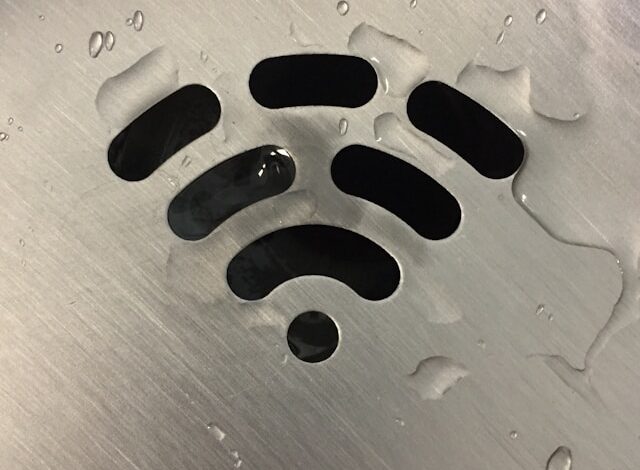Cracking the Code: Deciphering Password Security in Wi-Fi Networks

In today’s hyper-connected world, securing our Wi-Fi networks is paramount. We rely on them for everything from online banking to streaming movies, and a compromised network can expose our sensitive data. Understanding Wi-Fi Encryption plays a crucial role in safeguarding our digital lives.
But what if someone tries to crack our Wi-Fi password? This article dives deep into the world of Wi-Fi security, exploring password strength, common hacking methods, and strategies to fortify your network.
Demystifying Wi-Fi Encryption
Wi-Fi Protected Access (WPA) is the most widely used encryption standard for home Wi-Fi networks. It scrambles data transmitted between your devices and the router, making it unreadable to anyone without the decryption key (your Wi-Fi password). Here’s a breakdown of the different WPA versions:
WPA (TKIP): The original WPA standard, considered less secure due to vulnerabilities in its encryption protocol.
WPA2 (AES): The current industry standard, offering robust encryption with the Advanced Encryption Standard (AES).
WPA3: The latest standard, featuring enhanced security features like stronger password hashing and improved resistance against brute-force attacks.
Choosing the Right Encryption
When setting up your Wi-Fi network, ensure you select WPA2 or WPA3 for optimal security. While WPA may still be offered on some routers, it’s best to avoid it due to its security weaknesses.
The Peril of Weak Passwords
The strength of your Wi-Fi password is the first line of defense against unauthorized access. Here’s why weak passwords are vulnerable:
Dictionary Attacks: Hackers use automated tools that try common words and phrases found in dictionaries.
Brute-Force Attacks: These attacks systematically try every possible combination of letters, numbers, and symbols until the password is cracked. The shorter and simpler your password, the faster it can be cracked with this method.
Social Engineering: Hackers might try to guess your password based on personal information gleaned from social media profiles or phishing attempts.
Crafting an Impregnable Password
Length Matters: Aim for a minimum of 12 characters, ideally a combination of uppercase and lowercase letters, numbers, and symbols. The longer and more complex your password, the harder it is to crack.
Avoid Personal Information: Don’t use your name, birthday, pet’s name, or any other detail easily identifiable to you.
Ditch the Obvious: Steer clear of keyboard patterns (e.g., 123456) or common phrases like “password123.”
Embrace Randomness: Use a password generator to create a strong, unique password for your Wi-Fi network.
Safeguarding Your Passwords:
Don’t write down your Wi-Fi password or share it with anyone. Consider using a password manager to securely store your passwords.
Common Hacking Methods
Network Sniffing: Hackers can use software to capture data packets traveling over your Wi-Fi network, potentially exposing unencrypted information like usernames and passwords if you’re not using WPA encryption.
Man-in-the-Middle Attacks: These attacks involve the hacker inserting themselves between your device and the router, intercepting your data traffic. Public Wi-Fi networks are particularly susceptible to such attacks.
Fortifying Your Network Defenses
Beyond Strong Passwords: Here are additional steps to bolster your Wi-Fi security:
Enable Guest Network: Create a separate guest network for visitors, isolating their devices from your main network and sensitive data.
Disable Remote Access: Unless absolutely necessary, disable remote access features on your router to prevent unauthorized access from outside your network.
Keep Firmware Updated: Regularly update your router’s firmware to patch security vulnerabilities.
Use a VPN on Public Wi-Fi: When using public Wi-Fi networks, consider using a Virtual Private Network (VPN) to encrypt your data traffic.
FAQs
1. What is the most secure Wi-Fi encryption?
WPA3 offers the strongest encryption currently available for home Wi-Fi networks. Opt for WPA2 if your router doesn’t support WPA3.
2. How long should my Wi-Fi password be?
Aim for at least 12 characters, combining uppercase and lowercase letters, numbers, and symbols for maximum security.
3. Is it safe to use public Wi-Fi?
Public Wi-Fi networks are generally less secure. Consider using a VPN to encrypt your data traffic when on public Wi-Fi.
4. How can I prevent hackers from snooping on my network?
Enable WPA encryption on your router and disable features like remote access when not in use.
5. What’s the best way to remember strong passwords?
Use a password manager to store and generate complex, unique passwords for all your accounts, including your Wi-Fi network.
Conclusion
Securing your Wi-Fi network is essential in today’s digital age. By understanding Wi-Fi encryption, crafting strong passwords, and implementing additional security measures, you can create a formidable shield against unauthorized access and keep your online activities safe. Also visit our guide on best practices for home Wi-Fi security. Remember, a little vigilance goes a long way in protecting your data and privacy.




